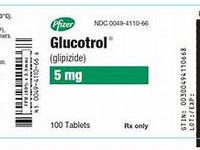repaglinide

CLINICAL USE
Type 2 diabetes mellitusDOSE IN NORMAL RENAL FUNCTION
0.5–16 mg daily, doses given 15–30 minutes before a meal; doses up to 4 mg can be given as a single dosePHARMACOKINETICS
DOSE IN RENAL IMPAIRMENT
GFR (mL/MIN)
30–80 Dose as in normal renal function5–29 Start at a low dose and gradually increase according to response<5 Start at a low dose and gradually increase according to responseDOSE IN PATIENTS UNDERGOING RENAL REPLACEMENT THERAPIES
IMPORTANT DRUG INTERACTIONS
Potentially hazardous interactions with other drugsADMINISTRATION
Reconstition
–Route
OralRate of Administration
–Comments
–OTHER INFORMATION
Major route of elimination is hepatic metabolism to inactive metabolites which are excreted via the bile.
See how to identify renal failure stages according to GFR calculation
See how to diagnose irreversible renal disease
Home








